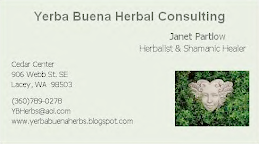 It is the end of 2011. Twenty-nine days into December, and the wheel of the year is turning. Last night’s pounding wind and rain gives way today to a watery winter sun, pouring in on me as I sit at the computer, writing. The picture my sister took of hawthorn fills my screen. Her picture reminds me that in this season, hawthorn gifts us with her presence...
It is the end of 2011. Twenty-nine days into December, and the wheel of the year is turning. Last night’s pounding wind and rain gives way today to a watery winter sun, pouring in on me as I sit at the computer, writing. The picture my sister took of hawthorn fills my screen. Her picture reminds me that in this season, hawthorn gifts us with her presence...
Last week I was down along the Deschutes estuary, birdwatching. It was a clear, cold day with an assertive north wind. I went with my friend to watch the winter ducks that form birdy clots on the shallow sandbars. But our attention was caught, and held, by big loose herds of robins, flying and calling, flying and calling. The focus of their attention was a large shrubby hawthorn, its branches laden with shining red berries. The robins were flocking in, gorging themselves on the su
 gar-rich fruit, now slightly fermented after several hard freezes.
gar-rich fruit, now slightly fermented after several hard freezes.The robins know what they're doing. These bright red berries are full of bioflavonoids, powerful healing pigments which not only give the berries their color, but also provide key anti-inflammatory, anti-viral and anti-cancer affects. The berries are a calming sedative to people who are nervous, and help calm irritable bowel. They are also anti-spasmodic, helping to soothe and calm muscle cramps.
The robins also love the fermented carbs as a warming source of nutrients in this season of winter, especially when their usual insect grubs are scarce on the ground. Hawthorn berries are good food for all animals, robins and humans alike. And when the robins eat them, the undigested seeds pass through their guts, and are scattered throughout the area, starting new trees.

In Ireland, this plant is known as sceach gheal (Bright Thornbush). It is sacred to the Sidhe, the powerful Faery spirits of Ireland. Traditional Irish Medicine people (also known as Faery Doctors) used hawthorn for all the same uses we have today.
They also knew this plant as powerful magic. Many in Ireland grew hawthorn hedges around their houses, where its two inch spikes provided a potent visual cue to its role as a protector. It was also believed to protect against lightning strikes and storms, so planting it around the house was seen as an all-around smart idea.
I think of hawthorn as one of the Great Mothers: she warms us, body, mind and spirit. She inspires us and brings us her warm red light, to ease depression and darkness in this season of winter. She brings her gentle energy and helps us find our heart’s purpose and destiny. For me, she's like a warm fire in the woodstove, heating the entire house. All of these
 things are key in this cold, wet time.
things are key in this cold, wet time.Hawthorn is considered powerful magic in Ireland, past and present. If a single tree grows on a rise or hill, it is considered a Faery haven and as such, must not be disturbed. Rational, down to earth highway engineers in Ireland have learned this (to their sorrow) and have had to re-route major motorways. This photo is of a hawthorn tree and a re-routed motorway near Ennis, Ireland.

I think about its magic & medicine when I look at this particular hawthorn bush along the Deschutes estuary. Located on a narrow land bridge between Percival creek lake and the main Capitol Lake, it is “betwixt and between”: this is a place of power in the Celtic world, a place where nothing and everything exists, a place of infinite possibility. It stands alone on a rise of land, which in Ireland would mean that it was surely a place of Faery. And although there are other hawthorns in the area, this is the only one so loaded down with scarlet berries. It casts its own strong spell of enchantment & allure; the robins cannot leave it alone. And I, driving by on my regular route, cannot seem to stop looking.
Here is my recipe for fire/hawthorn vinegar, a fabulously sustaining herbal tonic for winter (modified from Herbal Remedies Info on the internet.)
Fire Hawthorne Vinegar
1/2 cup fresh horseradish root grated1/8 cup of Garlic chopped
1/2 cup of Onion chopped
1/2 cup of fresh ginger grated
1/4 cup of hawthorn berries; if fresh, mushed up, if dried, just add to vinegar to soak.
1 tsp Cayenne powder
Directions
Place all ingredients in a quart jar and cover with Apple Cider Vinegar. Cover tightly. Steep for 8 weeks. Strain into clean jar.
How to Use Your Fire Vinegar
• Use as a rub for aching muscles and joints
• Make a poultice by soaking a clean washcloth in the fire vinegar to place on a congested chest.
• Mix with some honey to chase out a cold and cough (it's a great anti-viral).
• Drink it straight or diluted in some water or tomato juice. Start out with a one teaspoon or so to test your tolerance level.
Janet Partlow
Resources:
• Hawthorne photos by Nancy Partlow
• Faery tree in Ireland: see story at this link: www.irelandinpicture.net/2010/04/fairy-tree-that-delayed-motorway-ennis.html
• "Healing Herbs of Ireland" by Paula O’Regan
• "Plants of the Pacific Northwest Coast" by Pojar & Mackinnon
































